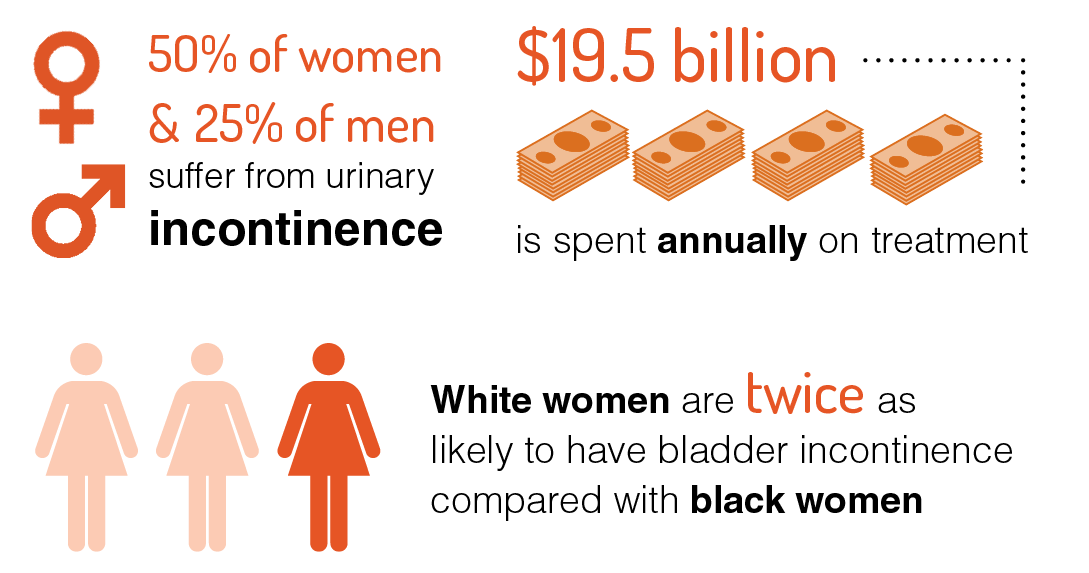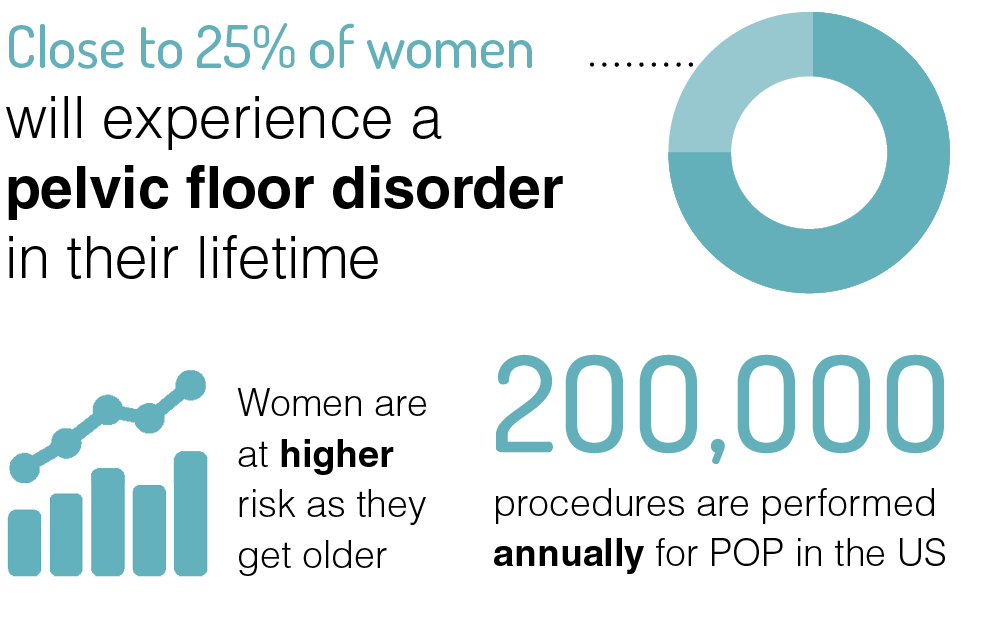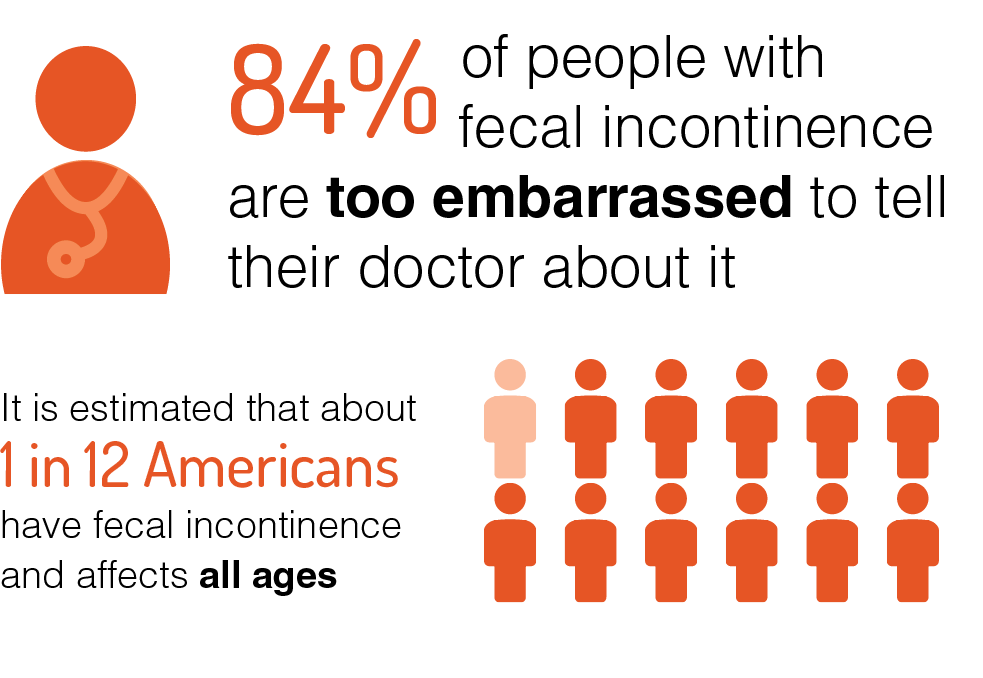- Stress urinary incontinence is when you have urine leakage with exertion, coughing, sneezing, or laughing.
- Urge urinary incontinence is when you feel an urge to go to the bathroom and leak before you can get there.
Causes
- Certain medications
- Having given birth
- Hormones
- Neurological conditions
- Aging
Treatment can include pelvic floor strengthening, using a pessary, medication, Botox injections, or a “sling” surgery.
Pelvic organ prolapse (POP) occurs when the vaginal and uterine supports fail and the vagina and uterus begin to sag or fall out of position. Since the bladder and rectum rely on the vaginal walls for support, prolapse can affect the function of these organs.
Causes
- Genetics
- Pregnancy and delivery
- Chronic constipation
- Heavy lifting
- Chronic coughing
- Collagen disorders
- Smoking
- Obesity
Treatment can include physical therapy, pessaries, and/or surgery.
Fecal incontinence is the inability to control your bowels. When you feel the urge to have a bowel movement, you may not be able to hold it until you get to a toilet.
Causes
- Constipation
- Muscle damage
- Loss of storage capacity
- Diarrhea
- Vaginal tearing
Treatment can include helping to strengthen the pelvic floor muscles, dietary changes, and minimally invasive surgery.





